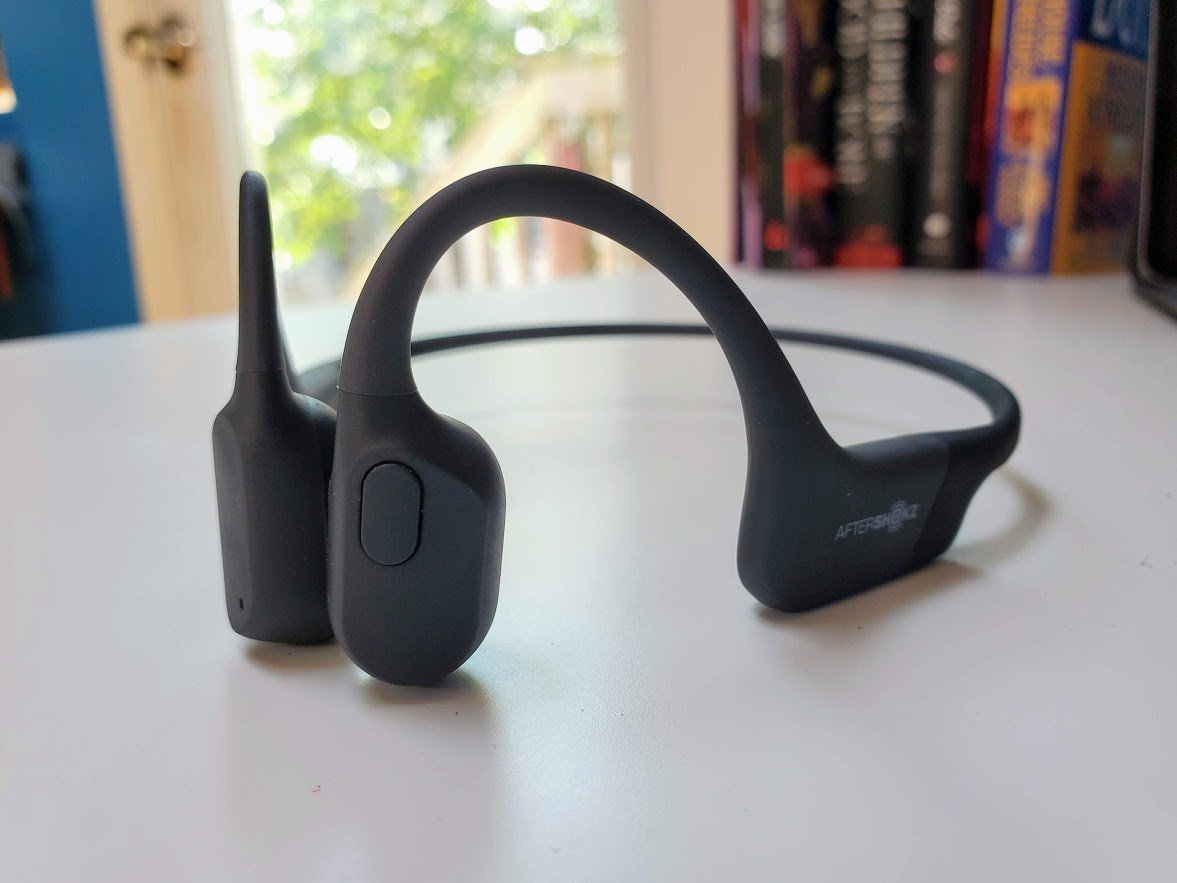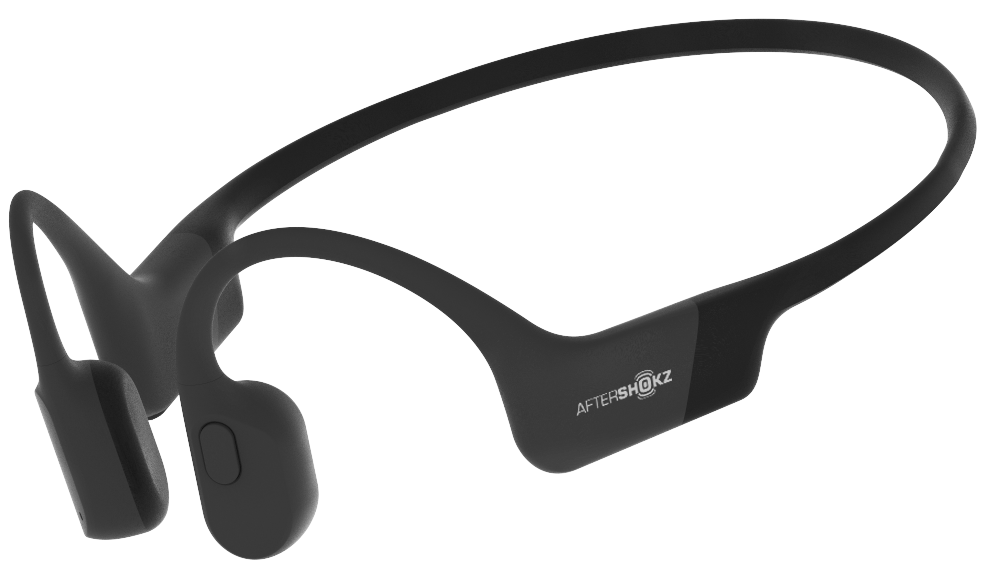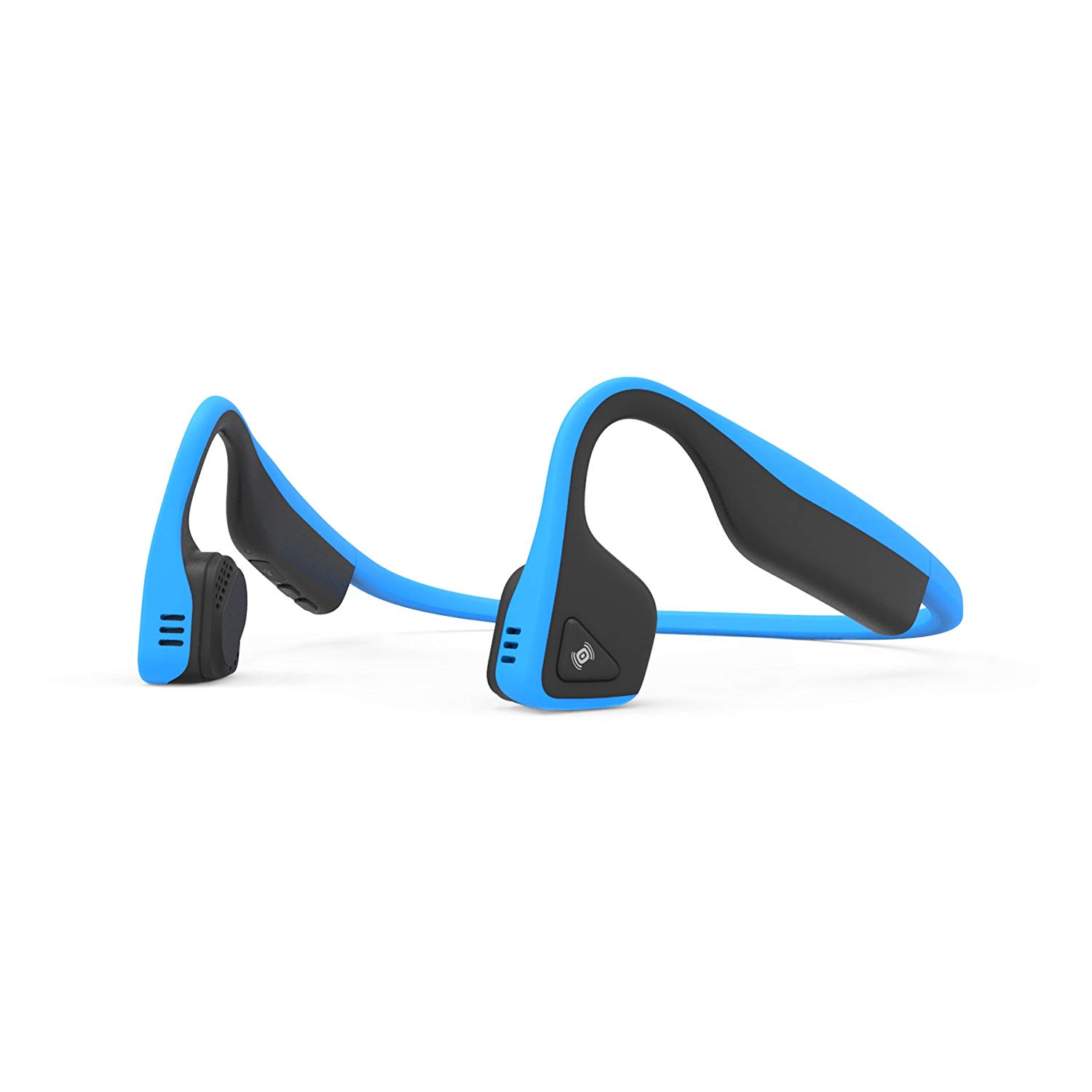The best bone conduction headphones are unique because they don't pour sound into your ears, but rather through your jaw and skull. As a result, the vibration through your skin, which is great for those who might be hard-of-hearing or who want to hear the sounds of traffic as they ride their bike, may not be the niche you're looking for. If you are in the market, though, the AfterShokz Aeropex are the best combination of sound quality, comfort, and performance.
Best overall: AfterShokz Aeropex
Fit and comfort are important for any pair of headphones, but those factors only multiply with a bone conduction pair. AfterShokz is all over this niche category, and after a few tries, I finally got the combination of functionality and flexibility just right with the Aeropex.
What works so well is how the sound spreads out across the entire pad so that more of your skull absorbs the audio output. The company also managed to improve the bass, which is always the most difficult part of the spectrum in bone conduction. It naturally can't match what in-ear and over-ear headphones will produce, but it's undoubtedly the best AfterShokz has done to date.
Despite beefier audio and a more flexible design, battery life still boosts up to eight hours per charge. That's excellent for something of this size. The onboard buttons mostly do their job, where it's easy enough to play/pause or bring up Google Assistant. However, turning the headphones off or trying to dial the last phone number is where the squishy buttons and their combo functions become problematic. Mistaken presses will not be uncommon here, and unfortunately, there is no way to change that.
The "Audrey" voice assistant for pairing is fine because it will work with non-Android devices, too, but Android's Fast Pair would have simplified the process further. However, the Aeropex's limitations are minor and don't detract all that much from the listening experience, and that's why this pair is the one to beat.
Pros:
- Comfortable fit
- Good audio quality
- Lower pad vibration
- Works with Google Assistant
- Solid battery life
- Water resistance
Cons:
- Squishy buttons
- Voice pairing assistant is just OK
- No customization options
Best overall
AfterShokz Aeropex - Open-Ear Bluetooth Bone Conduction Sport Headphones
$160 at Amazon $160 at Best Buy
Free your ears, not the sound
AfterShokz confirms its spot at the front of the bone conduction headphones market with the Aeropex, which deliver as promised.
Best value: AfterShokz Trekz Titanium
People usually go with bone conduction headphones because they want some ambient noise to seep in during use. That's why they can be great for running, cycling, or working out. The Trekz Titanium won't offer the sound quality of the Aeropex, but will stay put and ensure both music and background sounds are audible.
AfterShokz made them rugged enough to withstand sweat with an IP55 rating. The company also throws in earplugs that substantially increase the volume and resonance of the sound when you put them in your ears.
With all that in mind, none of it will matter if you're picky on sound. These lack bass and won't even match an OK pair of headphones. Four-hour battery life isn't great either, and it would've been nice to get more than a five-minute announcement before they died. The fit will also depend on your head and where you're wearing them, as the band is not especially contoured. However, if you want to get in on the AfterShokz brand and want to save money, these are your best bet.
Pros:
- Comfortable fit
- Includes earplugs
- Vibrant color options
- Good price
Cons:
- Bass isn't very strong
- Battery life is short
- Short low battery warning
- Band isn't as contoured
Best value
AfterShokz Trekz Titanium - Bone Conduction Wireless Bluetooth Headphones
Conducting sound at a lower price
They won't wow you with their sound quality, but they are good at keeping you safe in every noisy environment.
Best comfort: AfterShokz Trekz Air
The Trekz Air were actually AfterShokz' own answer to the Titanium. The key here was to make a smaller form factor that wouldn't feel as heavy or cumbersome for most users. It accomplished that, and in so doing, managed to improve a few other key facets that help make these headphones among the best available.
A more flexible band means you can wear them while being active or just sitting back in a chair without having to worry about them sliding out of place. Better sound quality and battery life over the Titanium also help, but that also comes at the cost of integrating Google Assistant. At least they can play audio for up to six hours, though you do need to recharge the battery via Micro-USB, which is a dated port in a world filled with USB-C.
It's also unfortunate that AfterShokz chose to go with more muted colors than the vibrant options with the Titanium. Perhaps because the Air are so comfortable under a bike or motorcycle helmet, they wouldn't be as noticeable.
Pros:
- Improved sound over Titanium
- Better battery life than Titanium
- Flexible comfort and fit
- Fits well with various helmets
- Earplugs included
Cons:
- Still no Google Assistant
- Micro-USB charging
- Muted color options
Best comfort
AfterShokz Trekz Air - Open Ear Wireless Bone Conduction Headphones
$115 at Amazon $120 at Best Buy
Small and light enough to take anywhere
AfterShokz cut things down to size, most heads wearing these headphones will probably be better for it.
Best for swimming: AfterShokz Xtrainerz
When you're already in a niche category and want to carve out something even more precise, you get the AfterShokz Xtrainerz. Though the company's other models have some ruggedness, they aren't made for repeated exposure to clear, or saltwater like the Xtrainerz are.
To punctuate that further, they have 4GB of internal storage to hold audio files for phone-less playback, which is great for training, but there's another key feature that stands out. Since they don't cover a swimmer's ears, they may be allowed in competitive races to let coaches relay feedback or instructions, either during a race or training. That they can even withstand saltwater for up to two hours is all the more useful.
They also have Bluetooth, so the phone isn't totally cut off. While the sound quality is decent for these, your mileage depends on how much you're in and out of the water. Battery life is good at up to eight hours per charge; just don't lose the proprietary magnetic charger.
Pros:
- Handles in clear and saltwater
- 4GB of internal storage
- Decent audio quality
- Solid battery life
Cons:
- Skip them if you're not swimming
- Don't lose the proprietary charger
- Pricey
Best for swimming
AfterShokz Xtrainerz - Open Ear Wireless Bone Conduction Headphones
$240 at Amazon $150 at Walmart
Put them on and take a dive
For those times when you want to swim or train in the pool, yet still hear everything going on around you.
Best mini bone conduction headphones: Vidonn F3
Vidonn shaved off one inch of length than the older F1, making the F3s the better option if you're after something more diminutive. It's made from the same titanium alloy the company's other model has, so outside of size, there isn't a huge difference in construction between them, save for the way the earpieces settle around the ear.
The size is the primary feature here, but there are a couple of other standouts. First, there is a reasonable amount of sweat resistance, so you can be active wearing them. Second, they also have Qualcomm's CVC (Clear Voice Capture) noise cancelation, which has a bigger impact on phone calls, though Vidonn claims there's a benefit when listening to music, too. Finally, battery life is rated at up to eight hours, comparable to other options on this list.
While flexible and relatively durable, you won't have much recourse if they don't fit right. Bass won't be noticeable without using the included earplugs to isolate it, but the F3 does play fairly loud at its default volume. Unfortunately, you don't have any volume buttons to control that, so you need to have your phone handy if you need to dial it back a little. There's a small play/pause button, except it's not as easy to get to because of its small size.
Pros:
- Made for smaller heads
- CVC noise cancelation
- Great color options
- Good battery life
- Affordable price
Cons:
- No volume buttons
- May not fit perfectly
- Small play/pause button
Best mini bone conduction headphones
Vidonn F3 - Open Ear Wireless Bone Conduction Headphones
Comfort for smaller heads
Vidonn tries catering to those whose noggins aren't quite as big by crafting a size more amenable to smaller craniums.
Best on a budget: Vidonn F1
This is the model Vidonn offers for most people who like bone conduction, and it comes off as a bargain compared to the top class. The F1 is a more standard variant compared to the smaller F3 — it's made with the same materials and sports a similar form factor. There is more power under the hood here, though the same challenges come to the fore when listening for bass.
There's also CVC noise-canceling onboard, which helps phone calls come through clearer, and with decent sweat resistance, you can listen to audio content or talk to someone without a problem. However, fit and comfort are highly dependent on the size of your head, and with little leeway for adjustment, it's hard to say how well it might stay in place, especially during a run.
Battery life is OK at six hours, but you would likely get more out of the F3. You also won't get the dynamic colors Vidonn used for the F3, but that will be fine if you want something a little more understated.
Pros:
- Comfortable fit
- Sweat resistance
- Nice design
- CVC support
- Affordable price
Cons:
- Not much bass
- Battery life could be better
- May not fit smaller heads
- Not as colorful as F3
Best on a budget
Vidonn F1 - Open Ear Wireless Bone Conduction Headphones
Bone conduction at a bargain rate
Vidonn offers something effective and affordable for anyone looking to listen to tunes without flowing through their ears.
Bottom line
Bone conduction headphones are not as ubiquitous as the in-ear, over-ear and on-ear variety are, but that doesn't make them any less relevant. Some wearers swear by them, and it's probably not a stretch to say that they may have saved a life or two along the way because they didn't cover ears in that crucial moment. However, if you are looking for something more in line with a regular pair of headphones but still want to go wireless, there are plenty of other great wireless headphones you might be better off with.
Niche wearers seeking bone conduction can start by considering the AfterShokz Aeropex because it offers the best performance and flexibility today. Improved sound, fit, and battery life stand out for the right reasons, ensuring you get an experience that won't disappoint. Of course, there are compelling choices beyond that, especially if you're on a tighter budget or really need something to swim with, but it's the best of the bunch right now.
Credits — The team that worked on this guide
Ted Kritsonis loves taking photos when the opportunity arises, be it on a camera or smartphone. Beyond sports and world history, you can find him tinkering with gadgets or enjoying a cigar.














Tidak ada komentar:
Posting Komentar